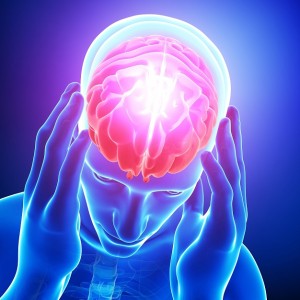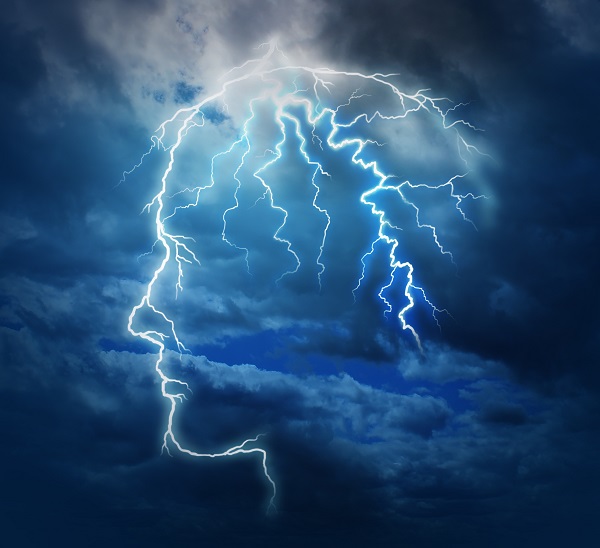25 Aug Learning from Brain Disorders
 Serotonin Imbalance
Serotonin Imbalance
I am possessed of an orderly disorder. My “Obsessive-Compulsive Disorder” (OCD) compels me to make sure everything is lined up nicely. Do good managers benefit from a little OCD? Today’s post is about what we can learn about the brain from observing what happens when something isn’t exactly right. Collette Bouchez, on WebMD, tells us that: “There are many researchers who believe that an imbalance in serotonin levels may influence mood in a way that leads to depression. Possible problems include low brain cell production of serotonin, a lack of receptor sites able to receive the serotonin that is made, inability of serotonin to reach the receptor sites, or a shortage in tryptophan, the chemical from which serotonin is made. If any of these biochemical glitches occur, researchers believe it can lead to depression, as well as obsessive-compulsive disorder, anxiety, panic, and even excess anger.” I also talk about neurotransmitter-related ideas in Chemicals And Cognitive Performance. Also, I mentioned Sensory Processing Disorder in Sensory Input to the Brain.
| Understanding Context Cross-Reference |
|---|
| Click on these Links to other posts and glossary/bibliography references |
|
|
|
| Prior Post | Next Post |
| Coordinating Neural Pathways | Go With the Flow |
| Definitions | References |
| brain | Bouchez on WebMD MRI |
| serotonin | HelpGuide.org |
| spectrum condition | DSM CAT NPR |

Of course OCD, like many other brain disorders based on imbalances, is a spectrum condition (check out the DSM). People afflicted at low levels exhibit unnecessary behaviors such as biting fingernails: “Like a needle getting stuck on an old record, obsessive-compulsive disorder (OCD) causes the brain to get stuck on a particular thought or urge. For example, you may check the stove twenty times to make sure it’s really turned off, wash your hands until they’re scrubbed raw, or drive around for hours to make sure that the bump you heard while driving wasn’t a person you ran over” (HelpGuide.org). Serotonin imbalance may be the culprit.
While Brodmann used very invasive procedures with many electrodes to capture and record electrical activity to produce rough maps of the specialized areas of the brain, today scientists are using Magnetic Resonance Imaging (MRI) and other advanced technologies like Computed (Axial) Tomography (CAT) Scan to improve those maps. Less invasive procedures are also being used now to stimulate brain activity through small targeted voltages precisely documented with feedback from the conscious subjects.
The journal Neuron reported that stimulation to the anterior cingulate cortex (ACC), which, tightly linked to the Amygdala, is involved in functions such as emotion, pain, and cognitive control “elicits autonomic changes and the expectation of an imminent challenge coupled with a determined attitude to overcome it” (Neuron, Dec. 2013). The topic of learning from brain disorders came up in a recent National Public Radio (NPR) report originating from KQED, on discovery of the brain phenomena and treatment of epilepsy. The NPR report pointed out how, for the past 50 years and more, researchers into the brain have been learning surprising things: “In the 1960s, a Canadian epilepsy specialist named Wilder Penfield found that by stimulating certain parts of the brain, he could make people move their hands involuntarily, or report a smell of burning leather” (NPR).  “Epilepsy gave us our first clue that parts of the brain are responsible for parts of the body, or for different senses,” says Dr. Edward Chang, a neurologist and neurosurgeon at the University of California, San Francisco, whose work with epilepsy patients has led to key findings about how humans process speech. The physical nature of the brain and thought, makes them subject to outside physical influences, including those that result from our own decisions:
“Epilepsy gave us our first clue that parts of the brain are responsible for parts of the body, or for different senses,” says Dr. Edward Chang, a neurologist and neurosurgeon at the University of California, San Francisco, whose work with epilepsy patients has led to key findings about how humans process speech. The physical nature of the brain and thought, makes them subject to outside physical influences, including those that result from our own decisions:
“You wouldn’t think that a thought has a shape or smell or any sort of physical instantiation. Thoughts seem to be a kind of tremendous magic. But just like voices, thoughts are underpinned by physical stuff. We know this because alterations to the brain change the kinds of thoughts we can think. In a state of deep sleep, there are no thoughts. When the brain transitions into dream sleep, there are unbidden, bizarre thoughts. During the day we enjoy our normal, well accepted thoughts, which people enthusiastically modulate by spiking the chemical cocktails of the brain with alcohol, narcotics, cigarettes, coffee, or physical exercise. The state of the physical material determines the state of the thoughts” (Eagleman 2012).
Some of the things we can learn from brain state changes and disorders occur at a small component level, such as microtubules. See my reference to research in Nematodes. Aphasia, receptive and expressive, tell us about the functions of Broca’s and Wernicke’s areas. There are several pathologies associated with Myelination. Much of the information I have discovered in my search for the seat of intelligence comes from discoveries around pathologies. Will intelligent machines have disorders? I presume so. And I further presume that the better machines get at understanding human intent, the more likely vexing quirks and anomalies are to appear.
| Click below to look in each Understanding Context section |
|---|








